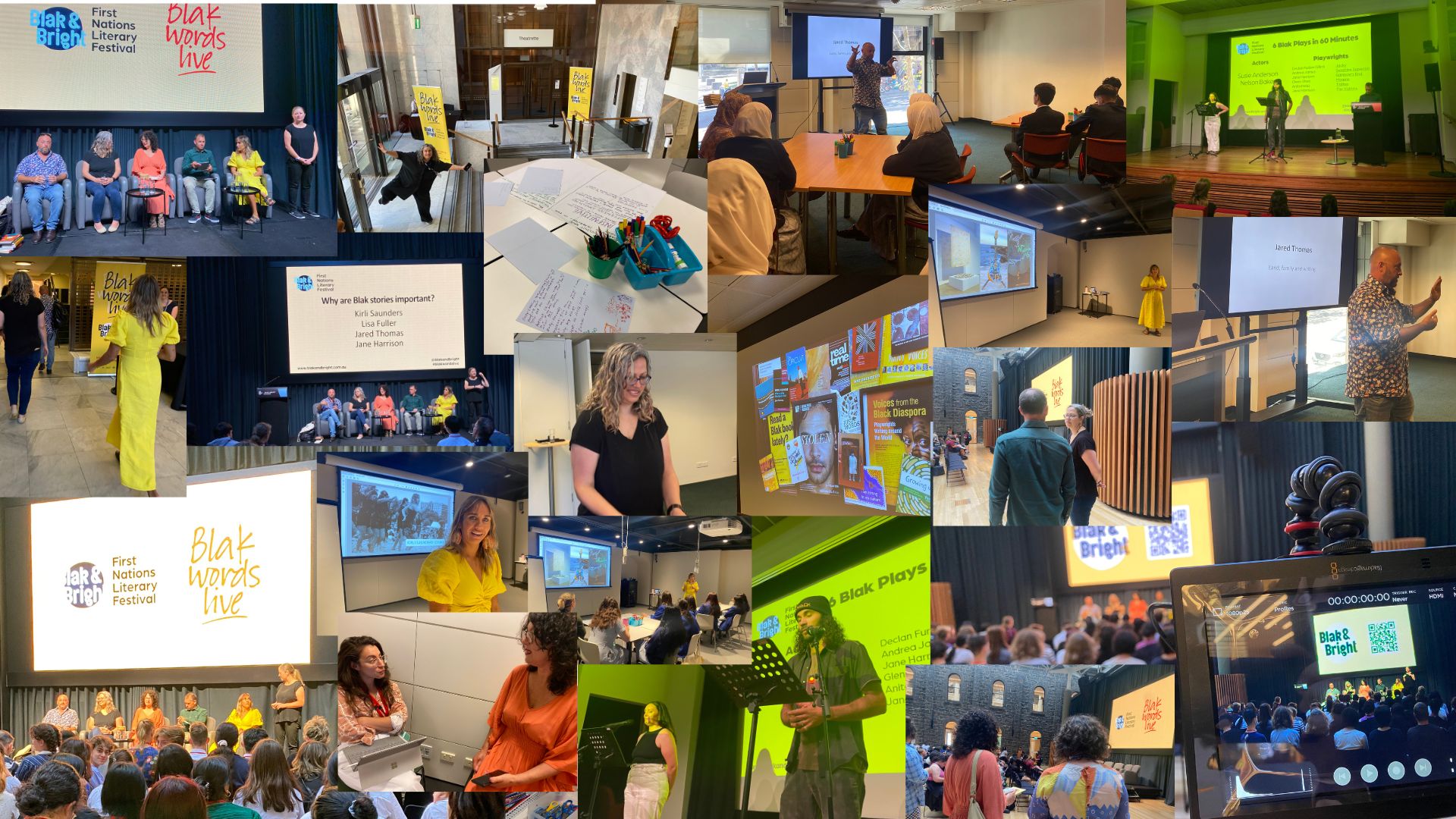It’s official, Jane Harrison (Blak & Bright Director) is a Living Legend! Her 2007 play ‘Rainbow’s End’ is one of three plays in the 2023 VCE English Curriculum.
1. Euripides, ‘The Women of Troy’, Methuen Drama 2007
2. Shakespeare, William, ‘Much Ado About Nothing’, Cambridge University Press 2014
3. Harrison, Jane, ‘Rainbow’s End’, Currency Press 2007
My call to 2023 VCE teachers and students: choose local, choose life (support living artists), choose matriarchal (by an actual matriarch), and choose First Nations.
The three texts:
Euripides, The Women of Troy, (Don Taylor, trans.), Methuen Drama, 2007
Presented in 415 BC, Euripides’ episodic drama focuses on the horrifying consequences of violence, drawing upon the many atrocities that occurred during the Peloponnesian War. As such, Euripides’ play is a lyrical commentary on loss – of a people, of a city, of a civilisation.
As dawn breaks on the ruins of Troy after the Athenian invasion, the city’s queen and women are confronted by the brutal reality of the battle and the cruelty of their fates. What ensues is a series of lamentations that question the traditional pantheon of gods and the morality of men who seek revenge under the guise of justice. The play thus reflects the universal ugliness of war, exposing a single, tragic truth: that while war devastates women and children particularly, everyone suffers – victims and victors alike.
Please note: In the Methuen edition, the speech on page 22 attributed to the Chorus is, in most other editions, attributed to Cassandra.
Shakespeare, William, Much Ado About Nothing, Cambridge School Shakespeare, Cambridge University Press, 2014
One of Shakespeare’s comedies, this play features characters from all parts of the social spectrum. Although set in Messina, Italy, the cast of soldiers, nobles, civic officials and women are easily recognisable to the English audiences of Shakespeare’s time and the comedy is typical of Shakespeare’s world.
The text provides value in the verbal sparring between Beatrice and Benedick and the somewhat pathetic pomposity of the constable Dogberry. The treatment of Hero would be seen as outrageous by Tudor audiences as she is framed by the wicked Don John and totally innocent of the charges that make her fiancé, Claudio, cruelly repudiate her. Today’s readers may be horrified to see the double standards of the men in the play who expect one type of behaviour from women and another from themselves. In exploring the fate of Beatrice and Benedick, as well as Hero and Claudia, the text also throws up issues relating to the nature of true love.
Harrison, Jane, ‘Rainbow’s End’, Contemporary Indigenous Plays, Currency Press, 2007
Set on the fringes of the Victorian town of Shepparton in the 1950s, Jane Harrison’s play illuminates the consequences of dispossession and colonisation for Koori peoples. The play opens on the Dear family, living with few possessions and in inadequate housing, listening to reports of the Queen’s tour of Australia. From here, Harrison explores the various ways the Dear family struggle to secure housing and physical safety, contrasting the Menzies’ era of enabling the great Australian dream of home ownership with the realities of systematic discrimination and racism.
While the men in the Dear family are often absent (such as Papa Dear who is away seeking justice and voice for his people) or dangerous (such as Dolly’s cousin), the women of three generations work to maintain and protect their family and to find purpose, joy and love in their lives.
Harrison’s play provides context, understanding, compassion and a way towards reclamation and reconciliation. As Larissa Behrendt suggests in her introduction to the collection, Rainbow’s End ‘is a durable, resilient stone that both builds upon Indigenous traditions but also lays the foundation for the generations that will follow’.



